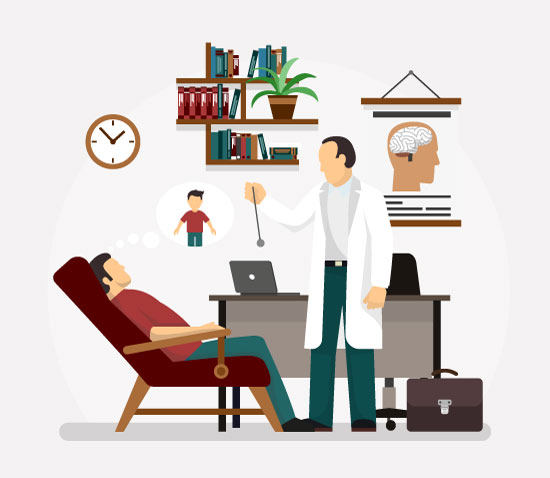Dental Treatment with Hypnosis for those who have dental phobias
Does the thought of sitting in the dentist’s chair fill you with worry? Or perhaps it’s the smells and sounds of the treatment room that make you feel anxious and sick? If a fear of the dentist is stopping you from getting the dental care you need, it might be time to turn to hypnosis.
What is Hypnosis?
While it’s hard to describe hypnosis in just a few words, it’s essentially the quietening of the conscious mind. It’s here that you hold all your fears, anxieties and phobias.
Through the use of hypnosis, you can more readily access your subconscious mind. As your practitioner carries out the session you will fall into a trance state, whereby your normal awareness of the outside world is reduced. While you’ll still be awake, your attention is somewhat focused on something else, whether it be a fantasy, activity, or feeling.
WHY USE HYPNOSIS IN DENTISTRY?
A huge number of us fear going to the dentist. In fact, around 50% experience some kind of anxiety when it comes to the bi-annual dentist trip while for up to 10% a dental phobia is life changing.
Hypnosis can be used to help rid you of your phobia and treat chronic dental pain. By muting all of those irrational thoughts in the human brain, hypnosis can create a feeling a calm confidence – enabling you to get through those appointments and treatments that have troubled you the most.
You will be taught how to relax through the use of visualisation. The process will also feature a number of stages, meaning you’ll never be pushed into something you’re uncomfortable with.
What’s more, hypnosis has also been proven to lower blood pressure. So in cases of dental work, you may also experience a speedier recovery time.
It’s important to note that not all phobias will be the same. Some will fear the smells and noises at a clinic or needles while others will fear the lack of control. Some phobias will also develop as a result of bad experiences that one might have had as a child.
THE POWER OF SELF-HYPNOSIS
If you haven’t already tried self-hypnosis it might be worth giving it a go. Ideal for those with mild fears or phobias, self-hypnosis can help you to shift your focus.
Popular techniques include:
- Meditation, where you focus on your breath, rather than the procedure itself.
- Positive affirmations, where you repeat positive phrases to yourself such as “I am relaxed and feeling fine”.
- Visualisation, where you focus on imagining something that has comforted you in the past – such as a childhood happy place. Visualisation also works well when teamed with music.
Dentist Coskun Kuru can treat his patients with hypnosis. Stating that methods such as tooth extraction, root canal treatment, and implants, including major surgical procedures, can be performed without patients feeling anything, Kuru said, “Hypnosis is a great convenience for those who have fear, allergies and nausea.”
Coskun Kuru, the founder of Clinic Kuru Oral and Dental Health Polyclinic, says that hypnosis method provides great convenience to people who are afraid of dental surgery or have allergies. The 36-year-physician, who defines hypnosis as a state of half-sleep and half-awake, said, “Everyone from the age of 8 is suitable for hypnosis. Methods such as tooth extraction, root canal treatment, implants can be easily applied. People feel nothing, even after surgical procedures, there is only enough bleeding to feed the tissues. The patient “When he wakes up, he does not need painkillers or antibiotics either. When the stitches are removed and the procedure is completed, the 1.5-month recovery period is completed in a week. Hypnosis is actually a special method that is officially applied in treatment procedures and increases the comfort of the patient.”
DONE WITH COMMANDS
Kuru, who received hypnosis training in Istanbul in 2006-2007 and then learned advanced hypnotherapy, said that they commonly apply hypnotic treatment to those with fear of dental surgery, allergies and nausea reflex. Coskun Kuru said, “People with nausea reflex can experience nausea and start to vomit even when they see the mirror or open their mouth only for examination. With hypnosis, the nausea reflex disappears completely. Patients do not feel anything., “He says that the patient’s eyes will be closed and will be asked to count backwards from 5. Then he gives commands and continues until the lethargic state in his body is restored.
RISK OF ANAFLACTIC SHOCK
Emphasizing that people can go into anaphylactic shock when anesthetized in all allergic cases, Kuru said, “In hypnosis, the patient can come to the position that he or she is under general anesthesia. Hypnosis can also be used in cases that require major surgery. When the patient is taken into deep hypnosis, methods such as tooth extraction, root canal treatment, and implants are easily performed. “When the patient wakes up, there is no swelling on his face, nor does he need painkillers or antibiotics. After that, a 1.5-month recovery period can be achieved in a week.”
ASK FOR THEIR CERTIFICATE
Emphasizing the importance of hypnosis, Coskun Kuru said, “Doctors or those who do this job can be asked for their certificates. The patient cannot wake up without the commands of the person who performs the hypnosis. He can wake up after 2 hours if there is no conversation, instruction or direction.

